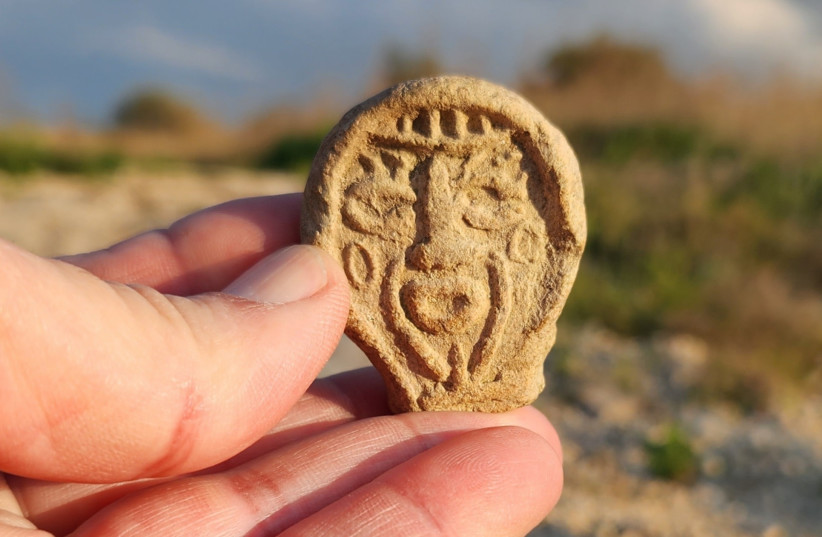Part of a Byzantine candle holder was found in the Israeli town of Tzur Yitzhak south of Modi'in on Saturday, by a family who went out for a Shabbat walk.
According to a release from the Israel Antiquities Authority (IAA), the family noticed a small clay face in the ground, which appeared to be looking up at them. Doron Lavi, the father of the family, reached out to the IAA and archaeologist Issy Kornfeld came to pick up the "photogenic" find.
Researchers at the IAA examined the item and determined that it is the decorative handle of a candle holder from the 6th or 7th century CE.
Not rare, but pretty
"Although it is not a rare find," explained Kornfeld, "the item certainly is lovely. The clay lanterns were used for lighting, and are a typical find for those periods. However, not every lantern had a handle, and certainly not a[n intricately] designed one. The candle holder this belonged to was used for the function of light, but also as an ornamental object."

Eli Escusido, head of the IAA, said: "We thank the Lavi family, who demonstrated good citizenship and handed over the beautiful item to the state treasury. The rains of storm 'Barbara'...brought ancient findings to the surface. We call on the public to be vigilant, and if they come across an ancient artifact to leave it where it is and call the IAA to come get it. The exact context in which the item is found provides valuable information for research."
